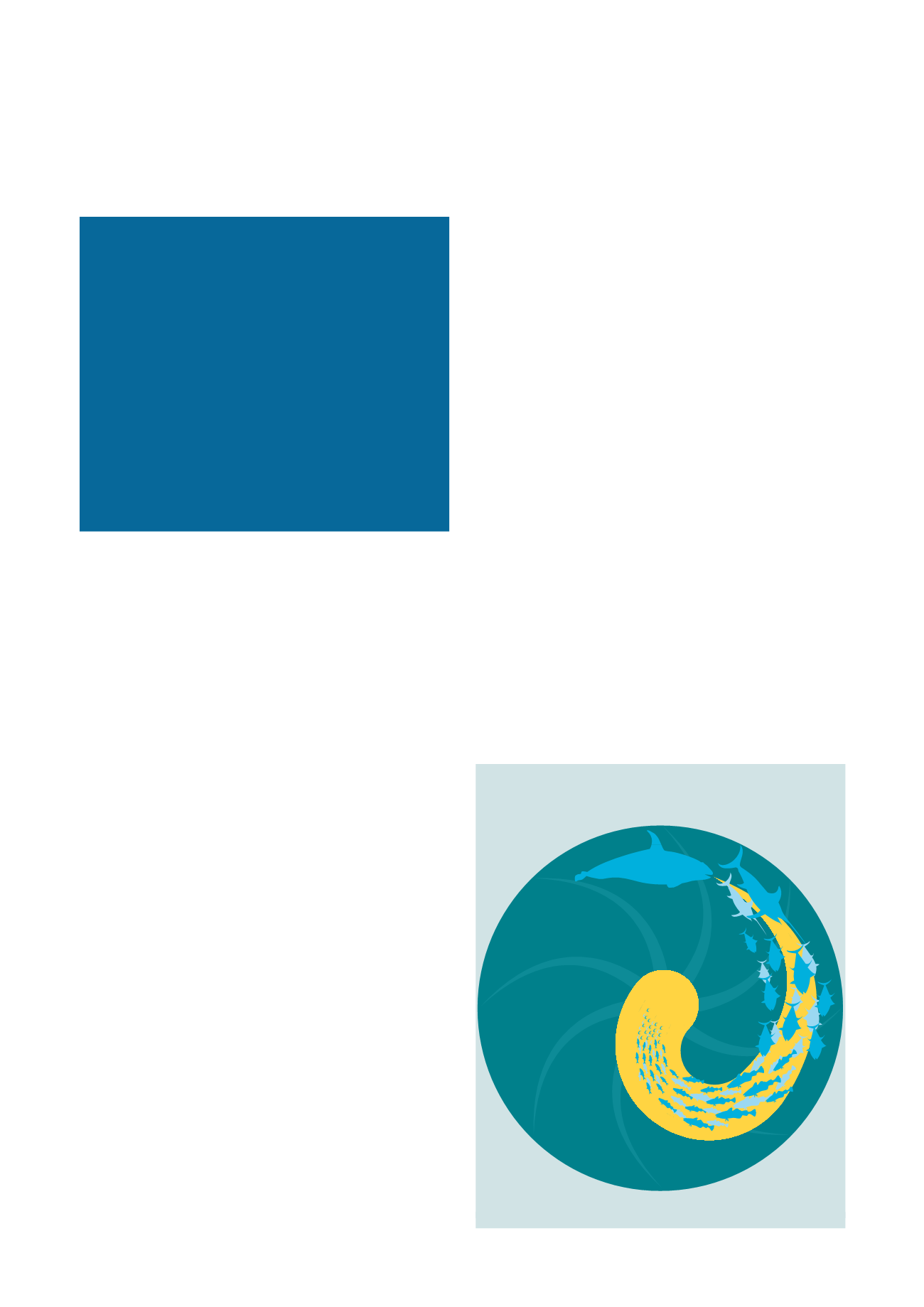

15
Marine Litter
Vital Graphics
Predators
Plastic bioaccumulation in the food web
IMPACTS
Microplastics have been found in many other filter
feeding and sediment ingesting organisms, including
amphipods, sea cucumbers, mussels and marine worms
(Graham and Thompson 2009; Murray and Cowie 2011;
Van Cauwenberghe and Janssen 2014; von Moos et al.,
2012; Wright et al., 2015). It appears that some organisms
commonly consumed by humans can retain plastic for
several weeks (e.g. mussels; Browne et al., 2008) and
show varying responses to the ingestion of plastic. For
example, the blue mussel has been observed to have
a strong inflammatory response and the Pacific oyster
has exhibited modifications to feeding behaviour and
reproductive disruption (Sussarellu et al., 2016).
There is much less information on the impact of the
microplastics that are increasingly being found in fish, but
there is growing concern due to the potential impact on
people who eat fish. During the 2009 Scripps Environmental
Accumulation of Plastics Expedition (SEAPLEX) in the
North Pacific Gyre, a total of 141 fish from 27 species were
examined for the presence of plastic particles. More than 9
per cent of the fish had plastic in their gut (Davison and Asch
2011). Similarly, a study of fish caught in the English Channel
revealed that more than 30 per cent of those examined had
plastic in their gut. It is currently difficult to determine the
connection between the health of fish and the presence of
microplastics (Foekema et al., 2013; Davison and Asch 2011;
Rummel et al., 2016). However, it is generally thought that
significant ingestion of microplastic material can, over time,
negatively affect the health of fish by falsely satisfying hunger
or causing internal blockages (e.g. Wright et al., 2013).
The presence of marine litter in birds, turtles and
mammals is well documented. A recent comprehensive
review revealed marine litter in 100 per cent of marine
turtles, 59 per cent of whales, 36 per cent of seals
and 40 per cent of seabird species examined (Kuhn
et al., 2015). Despite the large percentage of animals
swallowing plastic debris, death as a result of plastic
ingestion is probably too infrequent to affect the
population structure. However, other effects may be
more significant. These include partial blockage or
damage to the digestive tract and reduction in foraging
due to feelings of satiation, all of which can result in
poor nutrition and a consequent decline in health (Kuhn
et al., 2015).
Poisoned by plastic?
Apart from the physical risk from plastic, there is also
concern that marine organisms are at risk from the
ingestion of hazardous chemicals that are in the plastic or
adsorbed on its surface. The ability of plastic particles in
the ocean to attract organic chemicals that don’t dissolve,
which include many well-known toxic substances, has
led to a growing number of studies looking at plastics as
a source of toxic chemicals in marine organisms.
Plastic in faeces and other aggregates
The concentration of microplastic at the ocean
surface is thought to be lower than expected,
suggesting that it is somehow being removed to
deep sea areas (Cózar et al., 2014). Microplastics can
sink when they acquire ballast. It has been suggested
that one mechanism involved is the incorporation
of ingested plastic into faecal pellets (Wright et
al., 2013; Setälä et al., 2014; Cole et al., 2016). Algal
aggregates, which are common in surface waters,
can also incorporate microplastics (Long et al., 2015).
The faecal pellets and aggregates eventually sink,
taking themicroplastics with them (Long et al., 2015).
. . . . . . . . . . . . . . . . . . . . . . . . . . . . . . .. . . . . . . . . . . . . . . . . . . . . . . . . . . . . . . . . . . . . . . . . .. . . . . . . . . . . . . . . . . . ..
.. . . . . . . . . . . . . . . . . . .. . . . . . . . . . . . .. . . . . . . . . . . . . . . . . . . . . . . . . . . . . . .. . . . . . . . . . . . .. . . . . . . . . . . . . . . . . . . . . . . . . . .. . . . . . . . . .. . . . . . . . . . . . .. . . . . . . . . . . . . . . . . . . . . . . . . . . . . . . . . . . . . . . . . . . Plankton Microplastics Smaller sh Larger sh Predators Plastic bioaccumulation in the food web Source: Rochman, C., M.,The Complex Mixture, Fate andToxicity of Chemicals Associated with Plastic Debris in the Marine Environment, in Marine Anthropogenic Litter, 2015

















